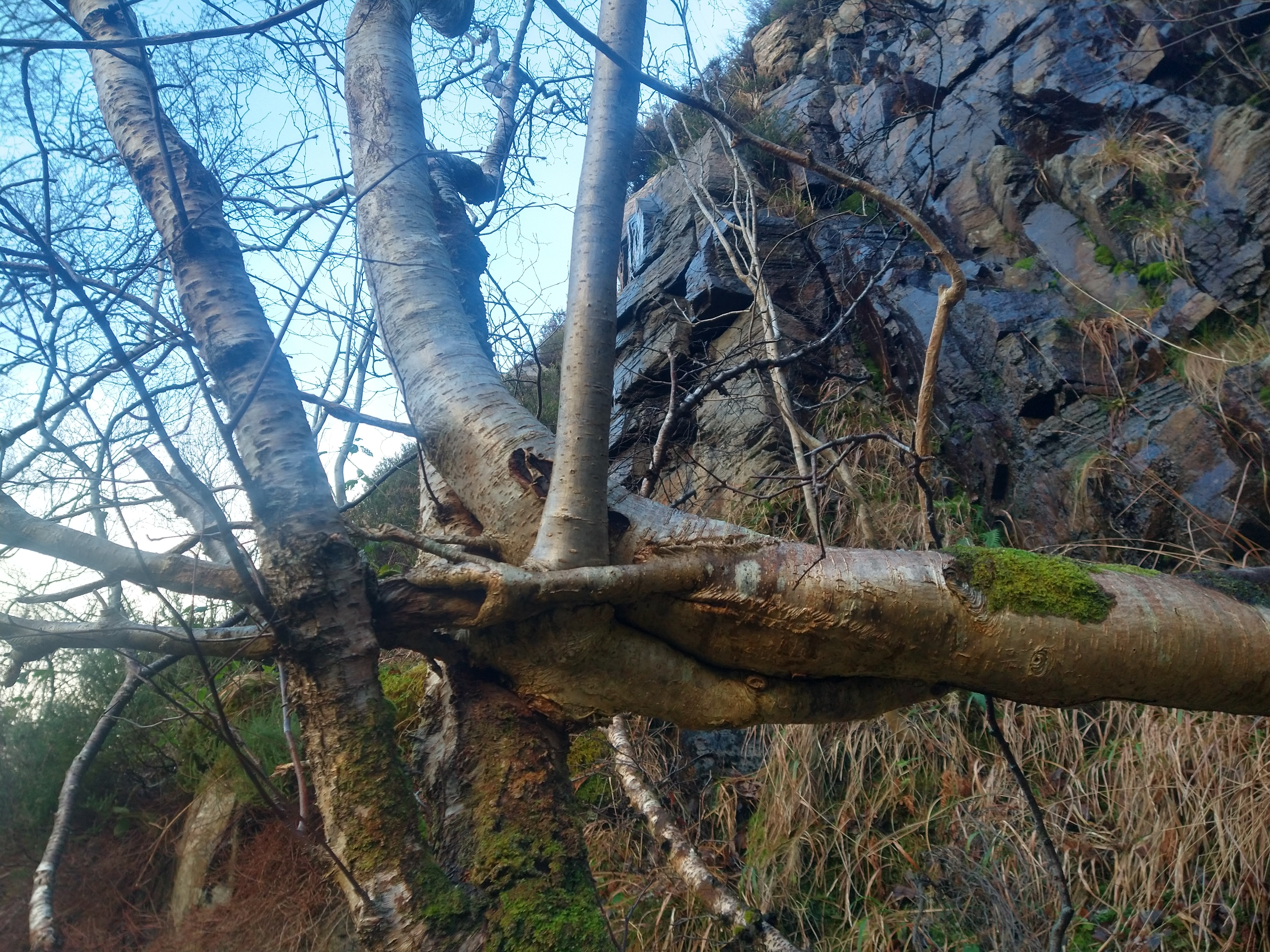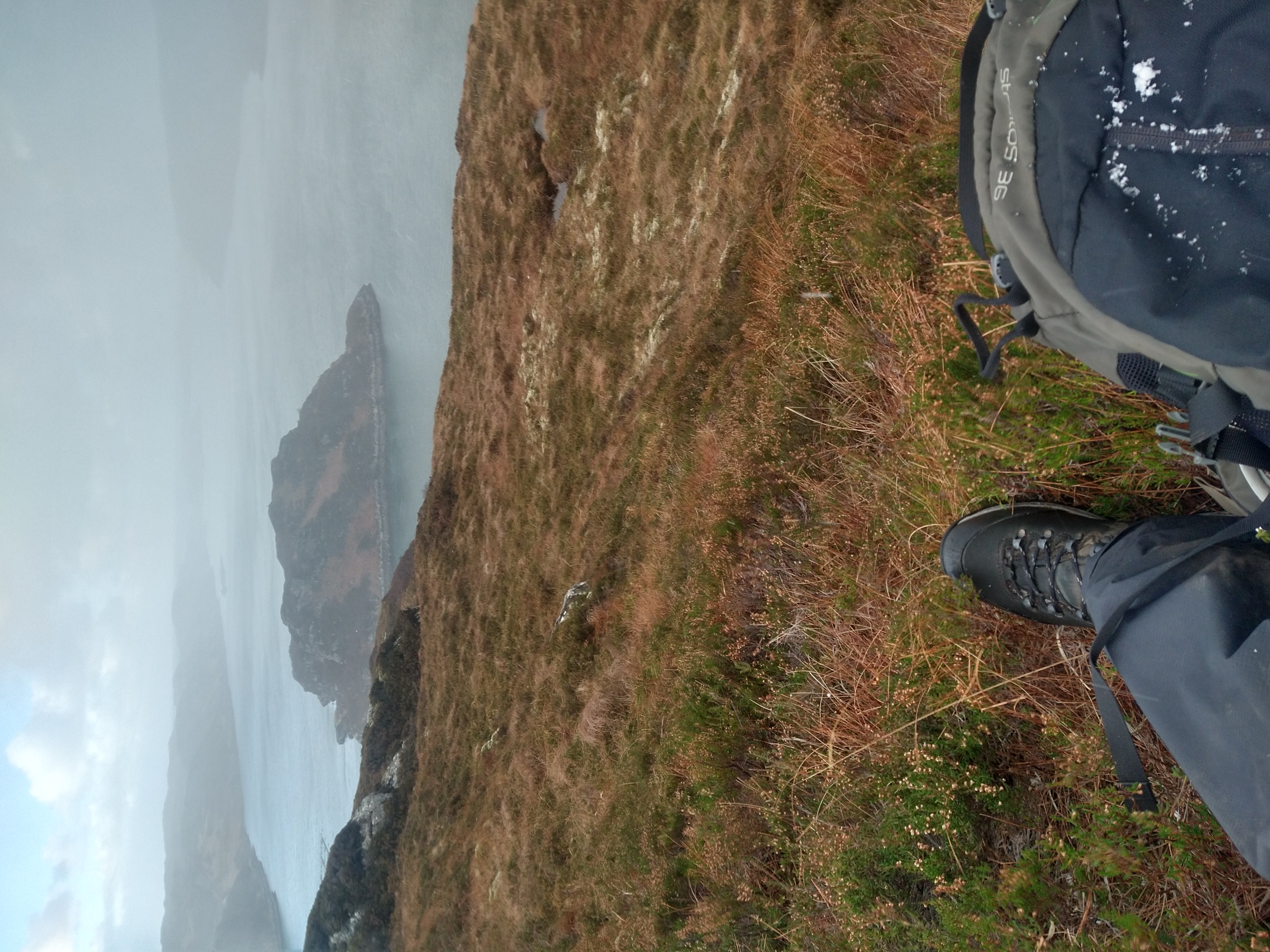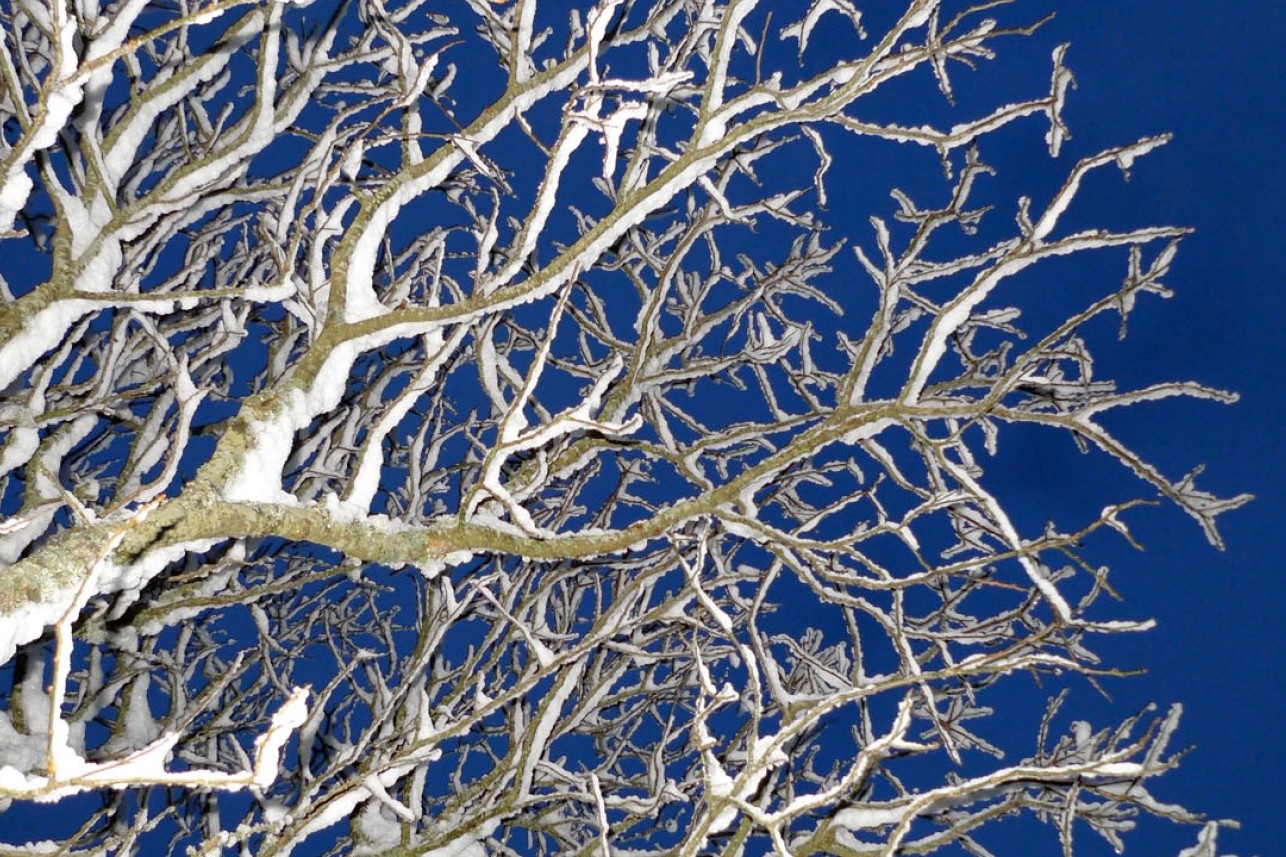Field Notes: Old friends
Take a magical midwinter walk through an ancient woodland that’s struggling for survival on the north side of Quinag with our Engagement Manager, Romany Garnett.

Stretching my legs after the Christmas break, I decided to take a look at the SAC/SSSI designated woodlands on the north side of Quinag to see how they’re doing. It is one of my favourite places to be. I have been walking this ground many years now and like an intimate friend, I love to revisit it.
I headed out on the headland on Torr a' Ghamhna aiming to drop down at the far end and circle the shoreline where the fragmented woodland is. A white cloud swept across the Eilean a’ Ghamhna and before long snowflakes gently stroked the air. I drank hot spiced ginger from the flask while enjoying sitting in a snow cloud.

I pressed on down over undergrowth clinging at times to heather and soon found myself surrounded by mossy greens, intertwined trees dripping with bryophytes and lichens. I noted basal shoots around a couple of birch trees were not as clipped as usual.
Down a particularly steep bit, a hazel tree had fallen and landed on a birch tree. The hazel adapted to its new position using the birch tree as a support. The two trees interlocked trunks and the hazel grew vertical stems from the now horizontal position it found itself in. I’m amazed at the versatility of these woods to survive against the odds.
Further down, lots of ancient grandmother/father trees had fallen in the recent storms. It is saddening to see a whole generation of senior trees flattened. It is nature’s way is to take the vulnerable first but, thinking of Suzanne Simard’s book Finding the Mother Tree and the interconnectedness of trees via mycorrhizal networks, I wonder how the rest of the woodland is affected by a generation of trees being taken all at once?
The future of this woodland relies on the next generation of saplings getting established so they can thrive - just like a healthy human community relies on young people being able to stay in the area. I can’t help but draw parallels with the Assynt human population and these fragile woodlands.
Further upstream, I was pleased to see aspens along the riverbank sheltered from the coastline and prevailing winds. There is something special about aspens and the diamond patterned bark, partly perhaps because of their scarcity locally.
This woodland is diverse with understorey species such as wild rose, ivy, honeysuckle, and bramble complementing wych elm, hazel, holly, and the occasional oak, among others. Early mornings in the summer this wood is alive with birdsong and is the breeding place for long tailed tits, wood warblers and willow warblers and many more.
Just before reaching the road, I startled a woodcock who was crouched low and delighted in watching its darting flight across the ravine.


